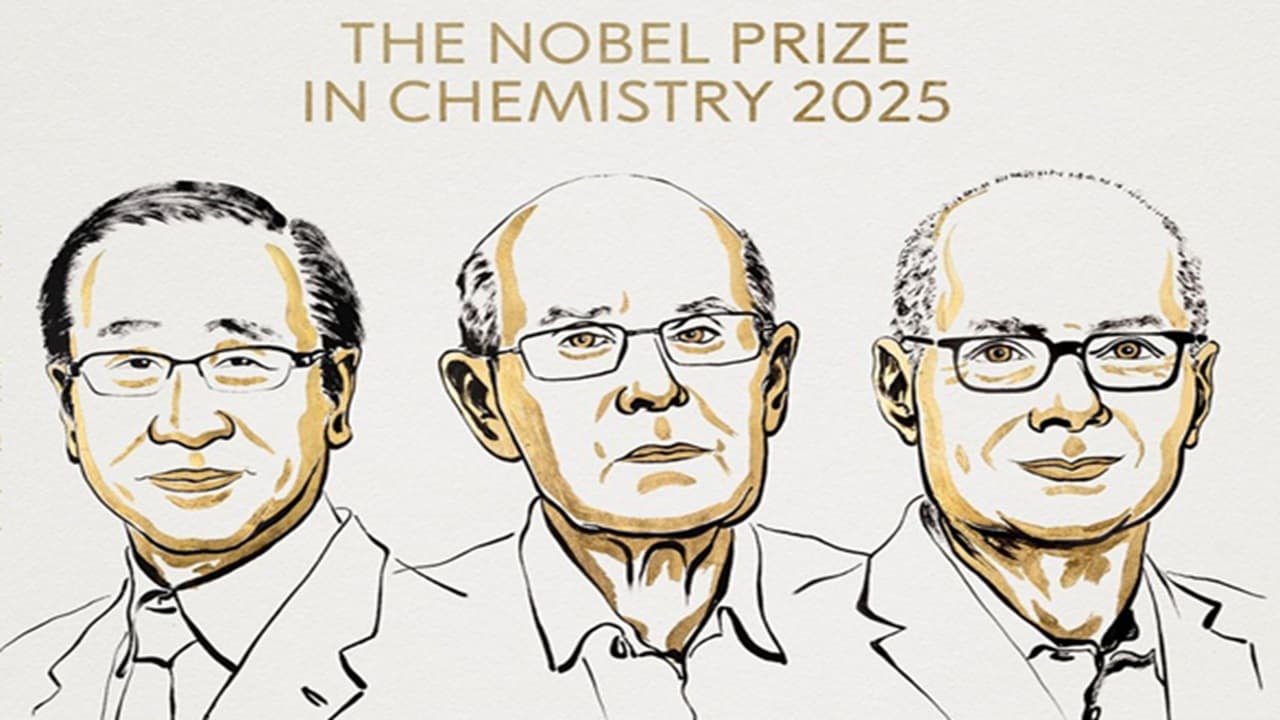Nobel Prize: The Nobel Prize in Chemistry has been received by Susumu Kitagawa, Richard Robson and Omar M. Yaghi. All three have built a metal-tractic structure. This structure can be used in many types of work from depositing water in the desert.
Nobel prize 2025 in chemistry: The 2025 Nobel Prize in Chemistry has been received by Susumu Kitagawa of Kyoto University, Japan, Richard Robson of Melbourne University, Australia and Omar M. Yaghi of California University in Berkeley, USA. The three scientists have been given this honor for the construction of metal-carbonic structure (MOF).
Metal-carbonic structures are highly porous structures formed by combining metal ions with organic molecules. They are crystalline. These can implicate nanoscopic structures gases and molecules. You can store them. Can manipulate them. Metal-carbonic structure can be used in tasks such as absorbing greenhouse gases, purifying water, catalysis of chemical reactions, and storage of hydrogen fuel.
The discovery started in 1989. Richard Robson used copper ions and complex organic molecules to add huge crystalline structures. The early structures were unstable. In the 1990s, Susumu Kitagawa showed that these structures can absorb and free gases. Omar Yaghi later built an exceptionally stable MOF for the first time. Its rational design presented the principles.
What is molecule room design?
The concept of “location for chemistry” is accurately connected to the engineer pores within the metal-carbonic structure (MOF). These are materials designed to prevent and manipulate molecules on Nanoskale.
These structures made of metal ions connected by organic molecules look like micro architectural blueprints. In this, metal ions serve as the foundation stone of the building. At the same time, organic ligands make long beams connecting them. This makes a big and repeated pattern. This creates a larger internal surface area. This creates a crystal with complex channels that act as a series of interconnected rooms. They can be designed to stop and store certain molecules.
MOF has an empty space up to 90% of the total volume. From this, a large amount of molecules can be deposited. The size and chemical nature of these molecule rooms can be adapted by adjusting metal nodes and organic lines used in the structure.
What can be used for metal-carbonic structure?
Gas storage: MOF can securely storage of large amounts of gases like hydrogen and methane for clean energy solution. These can prevent carbon dioxide from spreading in the atmosphere.
Water deposit: The vapor of water from the desert air from the MOF can be absorbed. This can relieve drinking water problems in dried areas.
Chemical purification: Due to the selective nature of the pores of the MOF, molecules of special toxic chemicals can be removed from water or air. It can be useful to purify water or air.
Catalys: The unique structure of the MOF framework can also serve as catalyst chambers. This can speed up chemical reactions in a controlled and efficient way.
Also read- Nobel prize in Physics: John Clarke, Michelle Deavorat, John Martinis received the award, know what to do
Sensor and medicine delivery: The ability of MOF to host and release guest molecules can be used as a sensor. Along with this, it can also be done to deliver the medicine to the special part of the body.
Also read- World Cleanest Village: This is the cleanest Hindu village in the world, you will also be surprised to know the way to reach here
